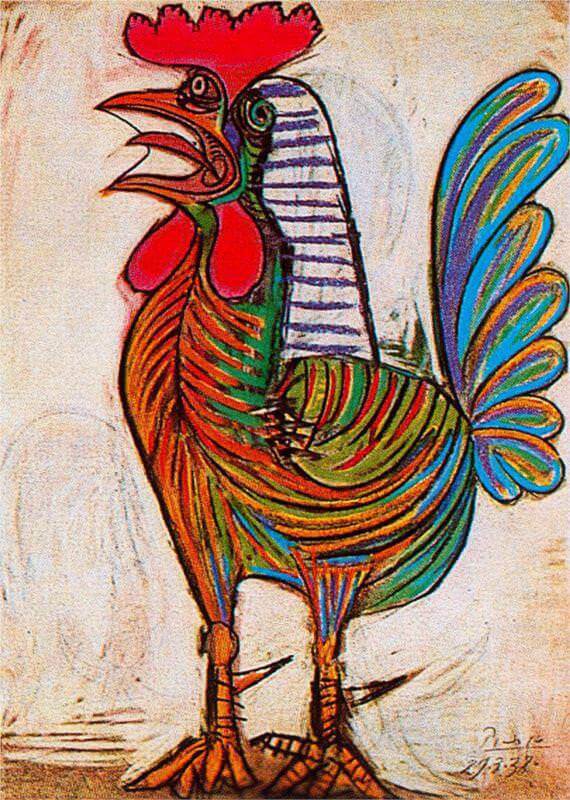The Roaster, 1938 by Picasso
In 1938, Picasso introduced cockerel imagery into his work, exploring the bird's movements and facial contortions. This return to the theme in 1943 sees a more reductionist approach to the subject matter. Here, the bird's body
appears clipped and tight, though the motion of flapping wings, featured explicitly in earlier works, is depicted by the orange and red fan shape that energetically breaks free from the restrained background. The exaggerated
circular motion of the tail feathers also creates a sense of movement, in contrast to the tight, angular pyramidal structure of the body.
The work conveys a sense of the helplessness of war, as in the more predatory picture, Cat Catching a Bird (1939). But like the bird in the earlier work, the squawking of this pathetic
angry creature is futile - its noise is insignificant against the backdrop of the night.
However, the bird could have another significance and symbolize America, which, at this time, had finally entered the war. Apparently, when first asked why he painted the rooster series, Picasso replied, 'there have always
been cocks, but like everything else in life we must discover them - cocks have always been seen but never as well as in American weather vanes"





















